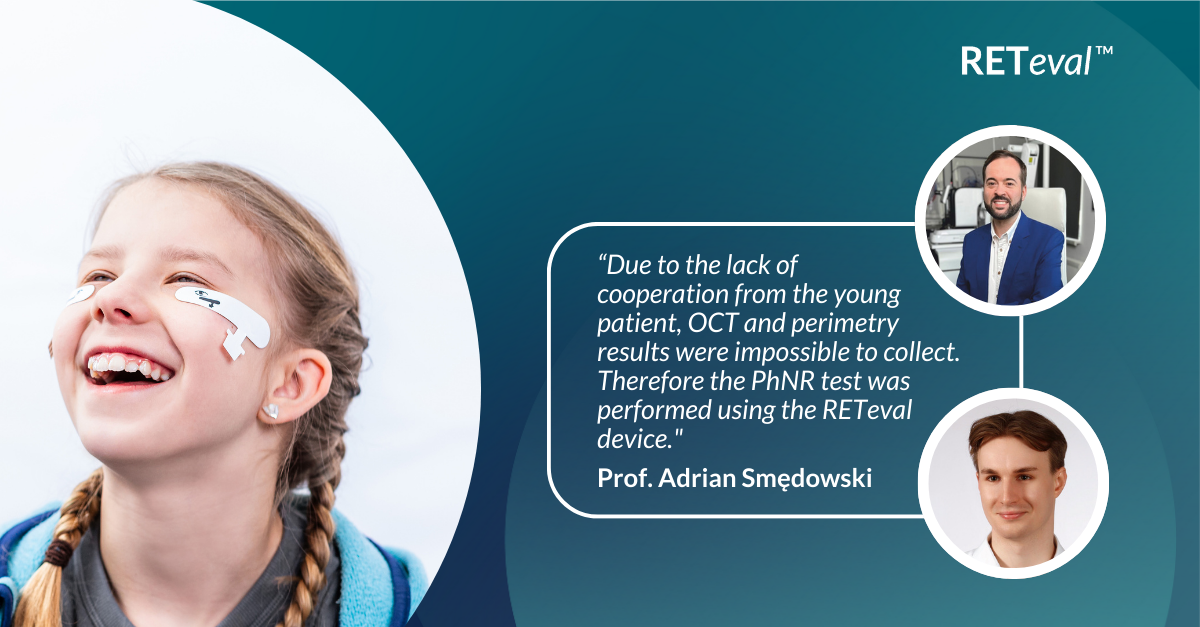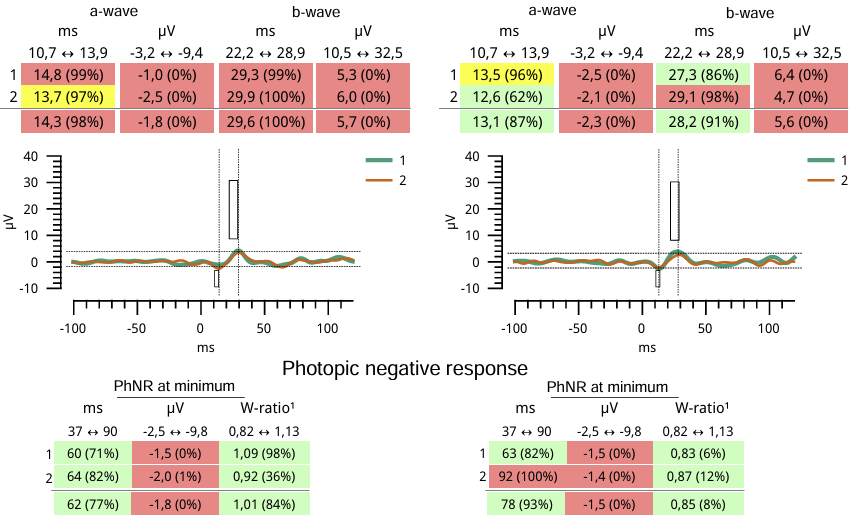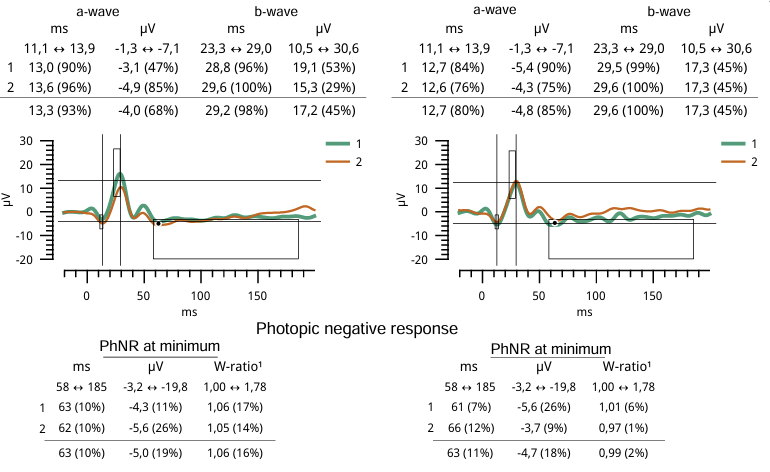Caso de Estudio
Photopic Negative Response as a Reliable Method for Glaucoma Follow up in Children
Dr. Bartłomiej Kocurek y Prof. Adrian Smędowski Universidad Médica de Silesia, Polonia
Una niña de 7 años acudió a una consulta oftalmológica especializada en glaucoma. Presentaba antecedentes de glaucoma congénito, y esta revisión se realizó tras una trabeculectomía. Su agudeza visual mejor corregida (AVMC) era: OD: 20/400, OS: 20/60 y su medición de la presión intraocular utilizando el dispositivo iCare fue OD: 20 mmHg y OS: 16 mmHg.

Why Was the ERG Test Performed?
During examination of the fundus photos, the doctor’s attention was drawn to a pale-pink optic disc with a tilted disc structure and pigment deficiency in the retina. Due to a lack of cooperation from the falta de cooperación de la paciente,no fue posible realizar OCT ni campimetría. Por ello, se optó por realizar una prueba de Respuesta Fotópica Negativa (PhNR) utilizando el dispositivo RETeval® de LKC Technologies.
What Were the ERG Findings?

Se registraron valores anómalos en la amplitud de la onda PhNR (Respuesta Fotópica Negativa) siendo el valor mínimo: OD: -1.8 µV, OS: -1.5 µV (Fig. 1). Asimismo, se observó una disminución en las amplitudes de las ondas a y b. Como consecuencia, se intensificó el tratamiento hipotensor incluyendo dorzolamida tópica 20 mg/ml, dos veces al día. Debido a la conducción retiniana alterada en la PhNR, se recomendó además realizar un electroretinogram (ERG) de campo completo con flashes según el protocolo ISCEV, junto con suplementación de vitamina A.
How Did the ERG Impact the Next Steps?
Tras un año, se repitieron todas las pruebas. La AVMC mejoró a: OD: 20/200, OS: 20/40 Como resultado de los ajustes terapéuticos, la PIO disminuyó a (Medido con iCare): OD: 11 mmHg, OS: 12 mmHg. Los resultados del test PhNR mostraron una mejora significativa en la amplitud(Fig. 2): OD: -5.0 µV, OS: -4.7 µV. También se normalizaron las ondas a y b. Los estudios demuestran que la reducción de la presión intraocular (PIO) puede mejorar la función de las células ganglionares de la retina, lo que se traduce en un mejor rendimiento visual, incluida la agudeza visual.

Conclusión
The PhNR test could serve as an alternative to standard assessments such as perimetry or OCT when it’s impossible to perform these tests. In cases where young patients are unable to complete complex evaluations, access to simpler tests that require minimal participation will ensure they receive the appropriate treatment.

Dr. Bartłomiej Kocurek & Prof. Adrian Smędowski
Universidad Médica de Silesia.
Dr. Bartłomiej Kocurek was educated at the Medical University of Silesia. After completing his studies, he began work to understand ERG and its utility in managing glaucoma in collaboration with Professor Adrian Smędowski, MD, PhD, FEBO.
Dr. Smędowski is a Professor of Ophthalmology at the Medical University of Silesia in Katowice, Poland, where he serves as Acting Head of the Department of Pediatric Ophthalmology and Deputy Head of the Department of Ophthalmology. He is a Fellow of the European Board of Ophthalmology and a specialist in clinical ophthalmology. Prof. Smędowski earned his medical and doctoral degrees from the Medical University of Silesia and completed postdoctoral research at the University of Eastern Finland. His research focuses on neuroprotective gene therapies for glaucoma and protein interactions in retinal ciliopathies. He leads translational ophthalmology research and is CEO of GlaucoTech and founder of GlaucoMed.



